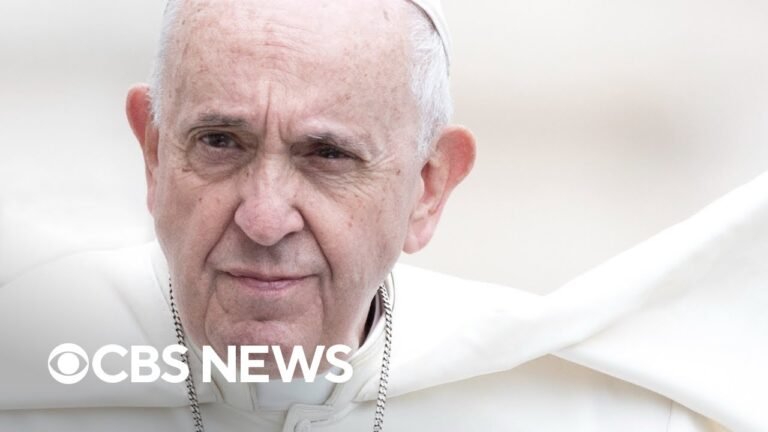The Catholic Church’s Stance on Gay Marriage: A Modern Dilemma
The debate surrounding gay marriage within the Catholic Church has intensified in recent years, challenging long-held beliefs and prompting a reexamination of doctrine. As societal attitudes shift and LGBTQ+ rights gain momentum, many Catholics are grappling with the intersection of faith and inclusivity. This evolving conversation not only reflects the diverse perspectives within the Church but also highlights the urgent need for dialogue on love, acceptance, and the definition of family in a modern context.
How does the Catholic Church view gay marriage?
The Catholic Church does not recognize gay marriage, believing that marriage is a sacramental union between one man and one woman.
- The Catholic Church officially opposes same-sex marriage, viewing it as contrary to its teachings on marriage being a sacramental union between one man and one woman.
- Despite the Church’s stance, there is ongoing debate within the community about the inclusion and acceptance of LGBTQ+ individuals, with some advocating for a more supportive approach towards same-sex couples.
Will a non-Catholic be able to marry in the Catholic Church?
The Catholic Church holds a nuanced view regarding marriages involving non-Catholics. It recognizes as sacramental the unions between two baptized non-Catholic Christians or between baptized Orthodox Christians. This acknowledgment stems from the belief that baptism establishes an essential bond among Christians, regardless of denominational differences.
In the case of marriages that involve a baptized non-Catholic Christian and a Catholic Christian, the Church requires additional considerations. Specifically, the Catholic partner must seek consent from the diocesan bishop to ensure that the marriage aligns with the Church’s teachings and values. This process underscores the Church’s commitment to maintaining the sanctity of marriage while fostering ecumenical relationships.
Are gay couples allowed to receive communion in the Catholic Church?
In the Catholic Church, the reception of Holy Communion is reserved for individuals in a state of grace, which means they are living in accordance with the Church’s teachings. For gay couples who are in a sexually active relationship not recognized by the Church, it is advised that they refrain from receiving Communion. This reflects the Church’s commitment to its doctrines while still emphasizing the importance of community and prayer for all individuals.
Nonetheless, the Church encourages everyone to participate in the Mass and engage in prayer, fostering a sense of belonging and spiritual connection. While the doctrine may present challenges, the message remains that all are welcome to seek solace and support within the Church’s community.
Is it possible for a Catholic priest to be gay?
The Catholic Church maintains strict guidelines regarding the sexual identity of its clergy, specifically excluding those with “uncertain sexual identity” or “deep-seated homosexual tendencies” from the priesthood. However, this stance exists in a complex reality where many Catholic priests identify as gay or engage in same-sex relationships, highlighting a significant tension between official doctrine and personal experience. This contradiction challenges the church’s teachings and raises important questions about the nature of faith, identity, and the evolving landscape of sexuality within religious institutions.
Navigating Tradition and Change
In a world where the pace of change accelerates daily, the delicate balance between tradition and modernity becomes increasingly significant. Many communities find themselves at a crossroads, where age-old customs clash with contemporary values. This dynamic interplay shapes identities, influences relationships, and drives innovation, prompting individuals to re-examine what it means to honor the past while embracing the future.
As technology reshapes our lives, traditional practices often face the risk of fading into obscurity. Yet, rather than abandoning these customs, many are finding ways to adapt them to fit modern contexts. From family rituals that incorporate digital elements to art forms that blend old techniques with new mediums, the essence of tradition can thrive even in a rapidly evolving landscape. This adaptability not only preserves cultural heritage but also enriches it, fostering a deeper understanding of both history and innovation.
Ultimately, navigating the intricate relationship between tradition and change requires open-mindedness and creativity. By engaging in thoughtful dialogue and collaboration, communities can cultivate a space where both past and present coexist harmoniously. This synergy not only empowers individuals to honor their roots but also inspires them to contribute to a vibrant, evolving tapestry of culture that reflects the best of both worlds.
Faith, Love, and Controversy
In a world often divided by beliefs and ideologies, the essence of faith continues to unite and inspire countless individuals. It transcends boundaries, fostering a sense of community and purpose among diverse groups. Love, as a universal language, weaves its way through these faiths, encouraging compassion, understanding, and acceptance. Together, they create a powerful force that can challenge societal norms and provoke thought, urging us to reflect on the deeper connections that bind us all.
Yet, the intersection of faith and love is not without its controversies. As differing interpretations emerge, debates can ignite passion and division, leading to a reevaluation of traditions and beliefs. These discussions, while often contentious, can also pave the way for growth and evolution within communities. Ultimately, the dialogue surrounding faith and love serves as a reminder that, despite our differences, the pursuit of understanding and harmony remains a shared aspiration worth striving for.
Bridging Beliefs in a Changing World
In an era marked by rapid change and diverse perspectives, the ability to bridge beliefs is more importante than ever. As communities navigate the complexities of cultural shifts and technological advancements, fostering dialogue becomes essential. By encouraging open conversations that honor different viewpoints, we create spaces for understanding and collaboration. This approach not only enriches our individual experiences but also strengthens the fabric of society, allowing us to move forward together with empathy and respect. Embracing our differences while finding common ground can illuminate pathways to a more harmonious future.
The ongoing dialogue within the Catholic Church regarding gay marriage reflects a significant cultural shift, challenging traditional views while fostering a deeper understanding of love and acceptance. As society continues to evolve, the Church stands at a crossroads, where the embrace of inclusivity could transform not only its teachings but also its role in the lives of countless individuals seeking recognition and affirmation. Embracing this change may ultimately lead to a more compassionate and unified community, where all forms of love are celebrated and respected.







